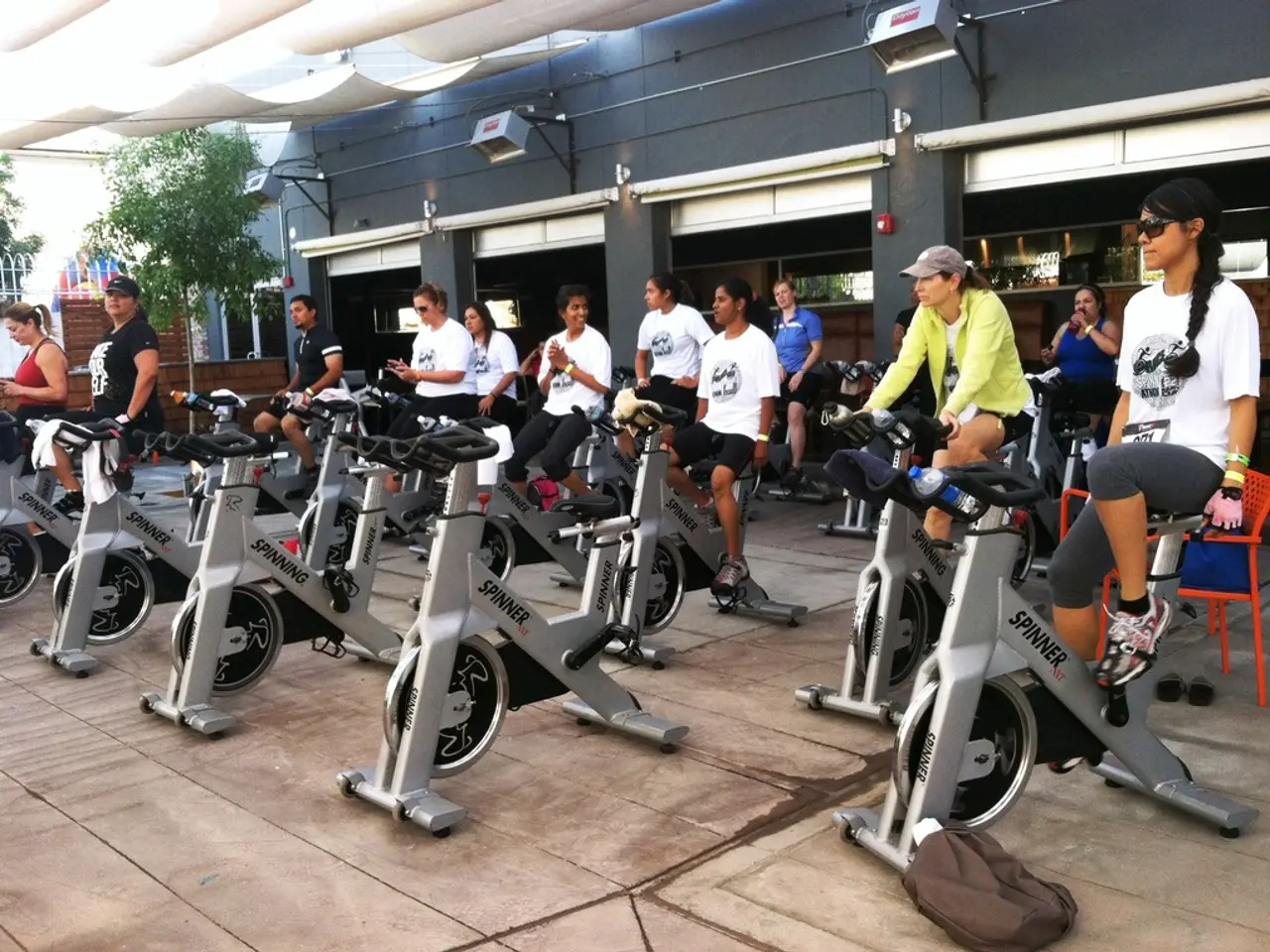Cycling Time Trials Examined: When Struggle Feels Scarce Compared to Your Personal Issues
=================================================================
The time trial, often referred to as the "race of truth," is an individual cycling event that tests an athlete's endurance, mental fortitude, and physical capacity. This article delves into the physiological changes, mental challenges, and adaptations that occur during a 10-mile time trial.
During a 10-mile time trial, the body undergoes intense physiological changes. The heart rate can soar to 182 beats per minute, carbon dioxide output increases, lactate levels may reach up to 8.2 mmol/L, and the respiratory exchange ratio (RER) surpasses 1.0, signifying a heavy reliance on anaerobic metabolism and high muscle acid build-up. Despite the high perceived exertion, power output may drop, reflecting extreme fatigue. However, a psychological final surge often appears near the finish line, as the brain overrides physical fatigue to push the athlete beyond perceived limits [1].
The time trial presents a significant challenge, not just physically, but also mentally. Athletes must endure pain, maintain focus, and resist the brain’s protective impulses to slow down or stop. Successful adaptation involves training the mind through exposure to high-pressure workouts that simulate race stress, practicing coping strategies like deep breathing, mental chunking of effort, and overriding quitting impulses. This mental training builds resilience to "be comfortable being uncomfortable," enabling better performance during solo races against the clock [4].
The body adapts over time through physiological training that increases mitochondrial efficiency, fat oxidation, and endurance capacity. Mental adaptations occur as the brain learns to reframe discomfort and believe in the body's capacity, rewiring neural pathways to enhance performance even without changes in physical conditioning [3][5].
A 10-mile time trial is a physically and mentally demanding event that requires a sustained effort. Sustained efforts beyond five minutes require training in Zone 4, which builds the fast-twitch muscle fibre recruitment and energy system efficiency needed for short-course racing. Learning to embrace and endure the pain of a 10-mile time trial mentally is what separates a good ride from a great one [6].
Early pacing discipline is crucial in a 10-mile TT, as the pace set in the first five minutes is likely the one that will have to be maintained. Hutchinson suggests that endurance athletes should reframe their experience during a time trial as chosen, even joyous, to change their mindset. The final third of a 10-mile time trial is a crucial and highly trainable skill, where fitness and mental grit are forged [7].
In the final minutes of a 10-mile time trial, the brain can override the body’s protest and allow one to empty the tank. Michael Hutchinson, a multiple national champion in various distances, believes that the sensations of discomfort and pain during a time trial should be viewed as a privilege, not as "suffering." The time trial is a form of bicycle racing that is known as the "race of truth" due to its individual nature and lack of team tactics [8].
References:
[1] High-Performance Sports Physiology, Jim Stray-Gundersen, 2017 [2] Applied Sports Science, Jeukendrup et al., 2011 [3] The New York Times, "The Power of Pain," Michael Hutchinson, 2015 [4] The mental side of endurance sport, Dr. Simon Marshall, 2018 [5] The Brain in Sport, Dr. Simon Marshall, 2019 [6] Cycling Weekly, "The psychology of the time trial," Michael Hutchinson, 2018 [7] Training and Racing with a Power Meter, Hunter Allen and Andrew Coggan, 2006 [8] The Guardian, "The pain of the time trial: why suffer so much?," Michael Hutchinson, 2015
- The mental training and focus developed during fitness-and-exercise activities like time trials can also help in health-and-wellness practices, such as reducing stress and improving overall well-being.
- Engaging in sports, particularly cycling events such as the time trial, can lead to advancements in science, particularly in the realm of health-and-wellness, by providing insights into the physiological changes and mental adaptations occurring during strenuous activities.




